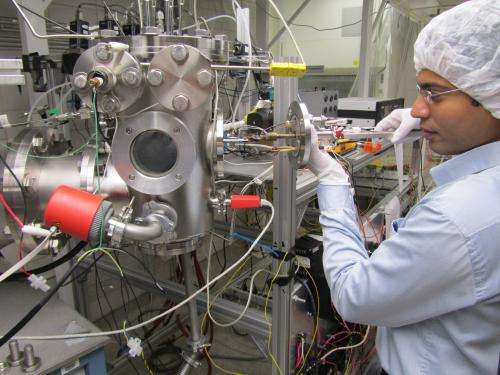The next big thing in the energy sector: Photovoltaic generated DC electricity

(Phys.org) —Energy consumption continues to grow. The costs of generation and transmission of energy must come down for the increased consumption to be sustainable. Energy must be generated without depleting resources, without causing pollution, and without incurring waste. Transmission of energy too must be efficient. These ideal goals, when realized, would enrich lives, regardless of economic distinction.
A viable solution is the onsite generation of electricity using the photovoltaic (PV) method of converting solar energy directly into electrical energy. The PV method uses semiconductor devices called solar cells. With constant reduction of the cost, this method is the most promising direct current (DC) power source for rich and poor globally. Due to the availability of solar energy all over the world, PV generation is not hostage to the usual geo-political constraints. Thus, it can power an energy revolution just like the information revolution powered by the internet continues to shape our world today.
Rajendra Singh, D. Houser Banks Professor in the Holcombe Department of Electrical and Computer Engineering and PhD student Githin F. Alapatt at Clemson University, along with and Akhlesh Lakhtakia, Charles Godfrey Binder (Endowed) Professor in Engineering Science and Mechanics at the Pennsylvania State University, recently examined the most promising types of solar cells to power every home. On October 23, 2013 they published a paper entitled "Making Solar Cells a Reality in Every Home: Opportunities and Challenges for Photovoltaic Device Design" in IEEE Journal of Electron Devices (Volume 1, number 6, June 2013 Issue).
Prof. Singh says that, as he had predicted in 1980, "the vast majority (~90 %) of installed more than 100 Giga Watt PV systems employ traditional photovoltaic panels made of silicon." Silicon is the second most abundant element in Earth's crust. Due to lack of functional reliability and the concomitant lack of economic bankability, PV systems employing solar concentrators have not made a significant impact worldwide. The use of thin films of semiconductors such as cadmium telluride, amorphous silicon and copper indium gallium arsenide is still to make a major commercial impact. PV modules comprising organic and dye-sensitized solar cells shall not play a role in bulk power generation, without fundamental breakthroughs in material synthesis and performance.
For increasing the efficiency of single-junction solar cells beyond the current limitations, several new approaches have been proposed by scientists. These approaches are based on concepts such as multiple exciton generation, carrier multiplication, intermediate band gap and hot-carrier extraction etc. However, after applying manufacturing criteria to ensure commercial viability, the Clemson and Penn State researchers became pessimistic about the efficacy of these approaches for bulk power generation.
The researchers have proposed a new multi-terminal multi-junction architecture for inexpensive PV electricity generation. Efficiency will exceed the currently feasible 25%. The proposed architecture is based on the use of currently commercial silicon solar cells and thin-film solar cells made of materials (such as copper oxide) that are abundant in Earth's crust. Management of the flux of solar photons through the solar cells is expected to boost efficiency, but the additional manufacturing costs to be incurred thereby remain unknown, according to the researchers.
Prof. Singh says that "the creation of local DC power grids can save power being lost in the transmission and unnecessary conversion from DC to alternating current (AC) and then back to DC." Most electronic appliances and electric loads operate on DC and by transmitting and converting AC power to DC about 30% of the total power generated is lost. Today, PV electricity generation and distribution on a DC microgrid is the best way to power villages without access to electricity. It is also the best option to replace aging power generation and transmission infrastructure in USA and other developed countries.
More information: IEEE Journal of Electron Devices Society (Volume 1, number 6, June 2013 Issue): Making Solar Cells a Reality in Every Home: Opportunities and Challenges for Photovoltaic Device Design, ieeexplore.ieee.org/xpl/articl … rue&arnumber=6589128
Journal information: Journal of the Electron Devices Society
Provided by Clemson University



















